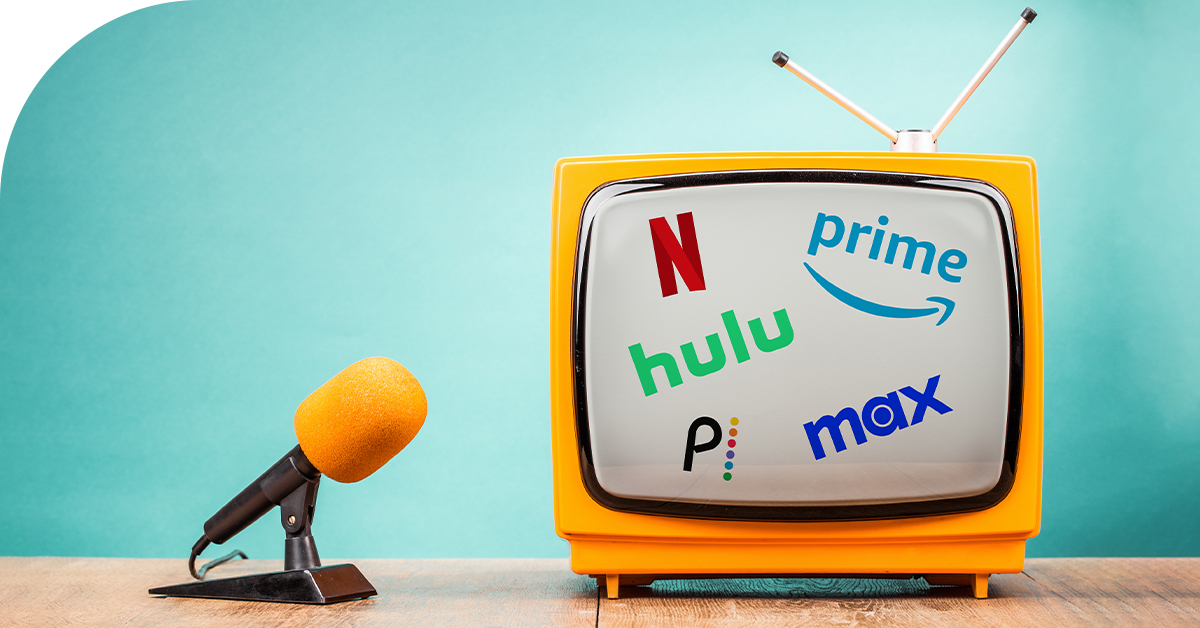In a world where cookies no longer reign supreme, savvy advertisers are charting new courses for success. In this blog, we explore the practical realities of this evolving landscape, spotlighting the growth of Connected TV (CTV) and audio platforms for reaching the right audience. From actionable insights to real-world strategies, discover how to seize the untapped potential of this cookieless frontier.
Video Streaming Market
Just how big is the video streaming market? According to Fortune, its current valuation exceeds $500 billion and is projected to expand further, reaching over $1.9 trillion by 2030. This growth is driven by factors such as increasing internet penetration, evolving consumer preferences, and the rise of 5G services, which offer faster downloads and smoother playback. As a result, online video services like Netflix, Hulu, Disney+, and Amazon Prime are expected to grow, supported by high-quality streaming, a diverse range of content including theatrical releases and digital sports, and the convenience of on-demand viewing.
Video Streaming Adoption
Back in 2020, Forbes estimated a global total of 1.1 billion subscriptions to online video streaming services. Fast forward to 2023, and that number has surged to approximately 1.8 billion. Remarkably, in 2024 99% of US households now have at least one streaming service subscription, a notable jump from the 52% reported in 2015.

Video Streaming Beats Linear TV and Cable TV
Streaming is now the preferred platform for television and video users in the US, capturing 36% of overall viewing time. Streaming services are rapidly gaining market share due to their diverse content offerings, which include original programming, licensed TV shows and movies, live sports, documentaries, and more, catering to a broad audience. Gracenote Global Video data reveals that streaming platforms offer 84% of the studio-produced video titles accessible to US audiences. Essentially, viewers have the freedom to watch what they want, when they want.

Cord Cutting and Streaming Demographics
A fascinating aspect of the transition to streaming that we’re witnessing is the evolving landscape of broadband ownership. The number of households cutting the cord and relying solely on broadband connections is on the rise. In the chart below, looking at the age group of 25 to 34-year-olds, a staggering 60% of households no longer have linear TV. This demographic represents prime earning and spending positions, emphasizing the importance of targeting them through CTV or alternative channels.

When examining different age groups and their engagement with streaming TV, we observe the highest penetration among 18-34 year-olds. Nonetheless, 35-54 year-olds are not far behind, and the 55+ age category approaches nearly 30%, and has continued to rise. This challenges common misconceptions about targeting the older demographic exclusively through traditional means and underscores the urgency for advertisers to adapt to the changing landscape.
 How the Transition to CTV Impacts Advertisers
How the Transition to CTV Impacts Advertisers
As traditional linear TV declines post-2025, the landscape for advertising placements is undergoing a transformation. The disparity in available placements between traditional TV and Connected TV (CTV) has become pivotal. As more brands pivot towards CTV, the crucial question arises: within the allocated budget, how many ads can effectively reach the target audience?
 Viewing behavior significantly influences this shift. With people increasingly favoring streaming or internet-based linear TV, the inventory for traditional TV diminishes. This prompts considerations about pricing, capturing audience attention, and strategically placing ads.
Viewing behavior significantly influences this shift. With people increasingly favoring streaming or internet-based linear TV, the inventory for traditional TV diminishes. This prompts considerations about pricing, capturing audience attention, and strategically placing ads.
In 2023, enthusiasm for Connected TV (CTV) took the spotlight for advertisers. The numbers speak volumes. By 2027, CTV ad spending is projected to reach a colossal $42.44B. This starkly contrasts with the current $24.6B figure, showcasing the immense growth potential within the industry.
What is Audio Advertising?
Audio advertising involves the promotion of products, services, or messages through auditory channels like radio, podcasts, or streaming music platforms. This method includes the development and delivery of audio ads tailored to reach specific audiences. These ads may manifest as concise commercials, sponsorships, or endorsements embedded within audio content. Leveraging sound, audio advertising provides businesses with a powerful means to connect with their audience, establishing it as a crucial element in a well-rounded marketing strategy.
Deloitte forecasts an increase in global consumer engagement with audio entertainment in 2024. This surge is expected to elevate monthly average podcast listeners to over 1.7 billion, monthly average audiobook listeners to 270 million, monthly average streaming music subscribers to 750 million, and monthly average radio listeners to nearly 4 billion.
According to an eMarketer, more than three-quarters of American internet users engage with digital audio formats like streaming music, streaming audio advertising, and podcasts at least once a month in 2024. Among these formats, podcast listenership is experiencing the most rapid growth, comprising approximately 26.9% of the US internet population.
5 Unique Advantages of Audio Advertising:
1. Immersive Connection:
- Utilizes sound for a distinctive and immersive way to connect with the audience.
- Creates memorable brand experiences through the power of audio.
2. Cost-Effective Production:
- Lower production costs compared to video ads.
- A cost-effective choice for businesses looking to optimize their marketing budget.
3. Highly Targeted Approach:
- Allows precise targeting of specific demographics or listener interests.
- Increases the likelihood of converting listeners into customers.
4. Versatile Integration:
- Seamlessly integrates into various platforms, from podcasts to radio.
- Provides flexibility in reaching a diverse range of audiences.
5. Precise Tracking and Analytics:
- Capitalizes on the rise of digital streaming services.
- Offers precise tracking and analytics for data-driven decisions.
- Enables businesses to measure the effectiveness of campaigns and optimize marketing strategies.
The Bottom Line
As we navigate advertising in a cookieless world, the rise of streaming and audio consumption presents unparalleled opportunities for savvy marketers. From the explosive growth of the video streaming market, to the profound shift in listening behaviors, the potential for targeted and impactful advertising has never been greater. These trends span across all demographics, including the once-hard-to-reach older age groups, giving advertisers a wealth of possibilities to engage with all audiences.
Witnessing the transformative power of CTV and audio advertising, with its immersive connection, cost-effective production, highly targeted approach, versatile integration, and precise tracking capabilities, it’s clear that embracing these innovative mediums is essential for staying ahead in today’s dynamic marketing landscape. So, seize the moment, explore new strategies, and unlock the boundless potential of advertising in this exciting era of streaming and audio.
Interested in Having a Conversation?
Discover how Choozle, your strategic partner in navigating the modern media landscape can help with CTV and audio advertising. Schedule a conversation today.

About the author:
Adam Woods is the Chief Executive Officer (CEO) and held two other roles at Choozle — Chief Client Officer and Chief Technology Officer. Throughout his tenure at Choozle, he has been improving the way that advertisers buy media through the Choozle platform. He has led initiatives to ensure that Choozle leads the space in terms of being a consultative partner that helps ensure the effective deployment of media through a combination of omni-channel planning, targeting best practices, upfront goal setting, and effective measurement.







